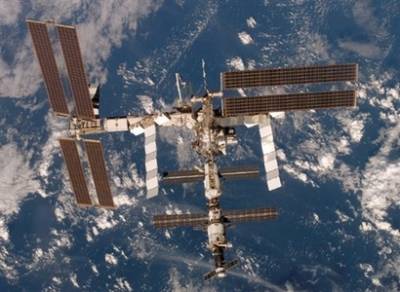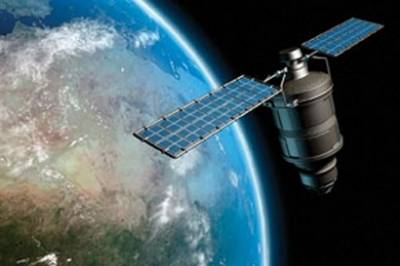BEIJING -- The debris left by a satellite collision above Siberia, Russia, poses a threat to China's solar synchronous satellites on the orbit, Chinese scientists said on Thursday.
|
 A view is seen from US space shuttle Discovery of the Internatonal Space Station (ISS) in 2006. US and Russian satellites crashed in space, the first known major accident of its kind, creating two clouds of debris that were being tracked by experts. [Agencies]
A view is seen from US space shuttle Discovery of the Internatonal Space Station (ISS) in 2006. US and Russian satellites crashed in space, the first known major accident of its kind, creating two clouds of debris that were being tracked by experts. [Agencies] |
Two telecommunications satellites, launched by the US and Russia respectively, collided on Thursday, at 0:55:59, in an orbital area 788.57 kilometers away from the Earth, at 97.88 east longitude and 72.50 latitude, according to Zhao Changyin, a researcher with the Purple Mountain Astronomical Observatory, in Nanjing City.
A monitoring network under the Chinese Academy of Sciences (CAS) is now closely watching and searching for the debris of the damaged satellites for the safety of Chinese satellites, said Zhao. But he insisted that such in-space collisions are rare.
The American satellite, which was projected on September 14, 1997, was operational until it was destroyed in the collision. The Russian satellite, launched on June 16, 1993 has ceased operation.
The American satellite, 560 kilograms in weight, was moving 780 kilometers above the Earth with an obliquity of 86 degrees. The Russian satellite weighed one ton, and was orbiting 790 kilometers above the Earth with an obliquity of 74 degrees, according to the Nanjing observatory.
The debris, which is spreading in space where the collision occurred, is forming a nebulous that may disperse gradually in the future, said Du Heng, a space debris expert with the CAS who is a researcher with the Space Science and Application Research Center.
|
 This image provided by NASA shows an artist concept of an Iridium satellite in earth orbit. Two big communications satellites collided in the first-ever crash of its kind in orbit over Siberia February 10, 2009, shooting out a pair of massive debris clouds and posing a slight risk to the international space station. The collision involved an Iridium commercial satellite, which was launched in 1997, and a Russian satellite launched in 1993 and believed to be nonfunctioning. [Agencies]
This image provided by NASA shows an artist concept of an Iridium satellite in earth orbit. Two big communications satellites collided in the first-ever crash of its kind in orbit over Siberia February 10, 2009, shooting out a pair of massive debris clouds and posing a slight risk to the international space station. The collision involved an Iridium commercial satellite, which was launched in 1997, and a Russian satellite launched in 1993 and believed to be nonfunctioning. [Agencies] |
The debris cloud may affect solar synchronous satellites moving in an orbital area of 700-900 kilometers above the Earth, including China's Fengyun-1 meteorological satellite and Ziyuan-1 observatory satellite, according to the expert.
"We can calculate whether our in-use satellites will be collided or not once the data of the debris cloud is published," Du said, noting it will help China readjust the operating gesture of its satellites on the orbit.
Thursday's satellite collision occurred with a relative speed of 11.6 kilometers per second, according to Zhao. Similar collisions have occurred in the past, he said.
On July 24, 1996, a French spy satellite ran into the remains of an Ariane V16 rocket carrier. On January 17, the debris of a Chinese-made Long March-4 rocket collided with the remains of an American rocket.

